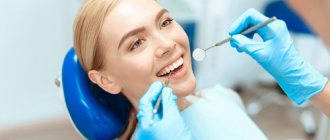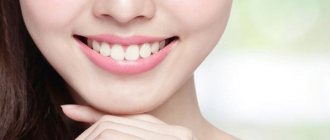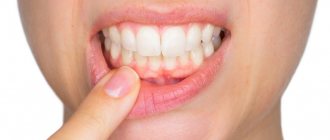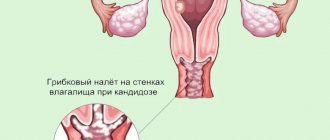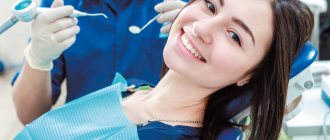According to statistics, about 70% of pregnant women do not visit the dentist. Neglect of treatment is justified by the opinion that anesthesia and dental procedures themselves can harm the fetus and the mother’s body. However, untimely seeking help and foci of infection can cause greater harm: caries, poorly treated root canals, inflammatory processes of the gums, plaque, abscess, periostitis. The neglect of pathological processes is fraught with the entry of microorganisms and their metabolic products into the general bloodstream and the development of a secondary infection.
It is important to remember that it is easier to prevent the disease than to resort to surgical treatment and medication in the future. That is why timely diagnosis and dental treatment during pregnancy is extremely important for maintaining the overall health of the mother and unborn child. In addition, a routine examination by a dentist is included in the list of mandatory examinations when planning pregnancy and during pregnancy.
Why should a pregnant woman go to the dentist?
After the gynecologist - to the dentist! If your suspicions about pregnancy are confirmed, the first, or one of the first, doctors you visit after leaving the antenatal clinic should be a dentist - even if you have never complained about your teeth before.
The oral cavity is home to about 50 million bacteria, the main food of which is carbohydrates. They obviously don’t have to complain about the lack of food, so they multiply - in warmth and satiety - with truly incredible speed, especially if their “owner” has a sweet tooth! And if it is not the owner, but the hostess “in an interesting position,” there are even more conditions for a comfortable life and rapid reproduction of microbes.
The increased appetite that usually accompanies pregnancy encourages you to consume more carbohydrates. Frequent vomiting in the first trimester can lead to increased acidity in saliva. Acidic environment and excess carbohydrates - what else does the microflora need?!
Due to the increased need for calcium, greater than usual, tooth enamel, the shield that protects teeth from contact with the microflora of the oral cavity, is also at risk during pregnancy. In your situation, the slightest damage to tooth enamel is fraught with the rapid development of caries: after all, the fetus is actively developing its skeletal system, and with the slightest lack of calcium in the body, it begins to “wash out” from the mother’s teeth and bones.
There is another reason why it is absolutely necessary to make time during pregnancy and after childbirth to visit your dentist (and, if possible, a periodontist). As you probably already guessed, this is periodontal disease. It (and its initial stage - gingivitis) can be safely called the disease of the century.
At least half of the adult population of our country suffers from gingivitis (without always knowing it). With this disease, hypertrophy of the interdental nipples develops, the edges of the gums become inflamed, the gums begin to bleed, and sometimes tooth mobility is observed. Unfortunately, pregnancy greatly increases the likelihood of developing gingivitis - there is even such a thing as “pregnant gingivitis.” If gingivitis develops during pregnancy, a woman has a much greater chance that her oral health will return to normal after childbirth than if she already suffered from this disease by the time she became pregnant. Therefore, my advice to you is - do not neglect visits to the dentist (at least once every six months) even before conception! Treatment of gingivitis comes down to anti-inflammatory measures and systematic sanitation of the oral cavity.
It is necessary to visit your dentist regularly to remove plaque and tartar. It is not only possible to treat bad teeth during pregnancy, but it is absolutely necessary - otherwise after childbirth it may turn out that there is nothing left to treat. In addition, carious teeth are simply a haven for a variety of microorganisms, including pathogenic ones, which can cause very unpleasant diseases in both mother and child.
Effect of X-ray
X-rays are another factor that frightens not only pregnant women, but also ordinary people. There are a lot of myths about the negative impact of x-rays on the human body, and since a woman during pregnancy must take care not only of herself, but also of the new life within herself, it is often because of these myths that she refuses dental treatment, for fear of harming the baby.
Of course, the X-ray procedure must be approached with all seriousness, but in this case you should not be afraid of it. After all, we are talking about a targeted effect, which is strictly aimed at a small area in the oral cavity, while the woman’s chest, neck and stomach are reliably protected by a lead apron. Therefore, we can say that exposure to X-rays is minimized and cannot in any way harm either the baby or the expectant mother.
Pain relief at the dentist during pregnancy
Local anesthesia (an injection into the gum) is quite possible, however, during pregnancy there are a number of restrictions and features, so you must inform your doctor that you are expecting a baby.
Even if you still suspect that you might be pregnant, it is better to play it safe and tell your dentist about your suspicions - he will certainly select an effective and safe anesthetic for you and the child (for example, ultracaine or ubistezin). There are people who are terrified of the dental office and dream of solving their “dental” problems “by magic” - with the help of general anesthesia. I would like you to know: dental treatment under general anesthesia is generally a double-edged sword (no one can predict in advance how your body will react to anesthesia), and during pregnancy it is completely contraindicated.
Implantation and prosthetics during pregnancy
Prosthetics in themselves are not prohibited during pregnancy. You can install removable and fixed dentures, and even crowns. But implantation will have to wait until the baby is born. Dental implantation during pregnancy requires a huge expenditure of vitality and body resources, and most importantly, the use of anti-inflammatory drugs, strong painkillers, and sometimes antibiotics.
Inserting an implant into bone tissue requires surgical cutting of the gum and drilling into the bone. And then the body must form new bone tissue around the implant. And all this during the period when the skeleton of the unborn child is intensively formed, when every milligram of calcium counts - so much so that the mother’s body is ready to weaken its own bone tissue and the structure of the enamel and dentin of the teeth so that the baby’s body does not experience a lack of calcium.
Therefore, during such a period, it is extremely unwise to further weaken the mother’s body and endanger the unborn child through the most complex surgical implantation operation. It is better to wait a few months and have implantation done after birth, without endangering the baby.
Fluoridation of pregnant teeth
To preserve and strengthen tooth enamel, doctors often recommend so-called local fluoridation with fluoride-containing solutions and varnishes. The fact is that fluorides suppress the metabolism of bacteria, promote hardening of the surface of the teeth and increase the resistance of teeth to acidic environments. In domestic dentistry, two methods of fluoridation are practiced. With the application method, a so-called “individual tray” is made - a kind of individual wax impressions of the teeth. A fluoride-containing composition is poured into the recesses of such impressions, and then they are applied to the patient’s teeth. This procedure requires 10-15 visits to the dental office. The second method is to apply fluoride-containing varnish with a brush to the surface of the teeth (in 3-4 visits).
Prices for aesthetic dentistry services
Consultation with a dentist - therapist Free Treatment of caries with placement of a light polymerization filling from 3,000 rubles. up to 4200 rubles. Treatment of pulpitis of the 1st tooth from 3500 rubles. up to 4000 rubles. Treatment of pulpitis of 2 teeth from 4750 rubles. up to 6,000 rubles. Treatment of pulpitis of the 3rd tooth from 6,400 rubles. up to 8200 rubles. Light polymerization filling from 2800 rubles. up to 3500 rubles. Artistic restoration from 4950 rubles. up to 6900 rub. Professional hygiene (removal of dental plaque, Air-flow, polishing). Price for one jaw RUB 2,500. ZOOM whitening RUB 15,000.Teeth whitening during pregnancy
The teeth whitening procedure consists of two stages. First, plaque and tartar are removed and removed, then the teeth are treated with special whitening pastes and elixirs. Plaque is removed either using ultrasound (it may make sense to refrain from this procedure in the first half of pregnancy), or using special pastes that are used to treat each tooth separately (which is absolutely safe at any stage of pregnancy). Whitening pastes and elixirs are completely harmless to the mother or fetus. The teeth whitening procedure usually lasts about an hour.
Symptoms
Hyperesthesia is an instant, painful reaction of teeth to external stimuli:
- cold or hot food;
- air temperature changes;
- sour or sweet drinks;
- spicy or salty foods.
The reaction begins quickly and is accompanied by acute, unbearable pain, but as soon as the stimulus is eliminated, the pain immediately subsides.
Let's figure out what can happen if this disease is not treated in a timely manner:
- Increased pain that will continue regardless of the presence of an irritating factor.
- The list of irritants can grow greatly.
- The spread of hyperesthesia to a large number of teeth, it can develop into a systemic stage.
- The appearance of frequent headaches.
What kind of water should a pregnant woman drink?
It has been proven that fluoridation of drinking water significantly reduces the likelihood of developing caries. In our country, fluoridation is carried out (the standard concentration of fluoride in drinking water is 1.5 mg/l), however, unfortunately, there are frequent cases of both a lack and an excess of fluoride in drinking water. Don't think that low fluoride levels are the only cause for concern. An excess of this element is fraught with fluorosis (a specific lesion of tooth enamel, manifested externally in the form of yellow spots), which threatens not only the mother, but also the unborn baby (after all, baby teeth are formed at 3-5 weeks of intrauterine development). You can find out what the concentration of fluoride is in your drinking water at your local SES (but do not expect that SES employees will, on their own initiative, inform you about the level of fluoridation in your drinking water!). To regulate the level of fluoride in water, you can use special filters that are now commercially available.
“Tooth rash” after childbirth?
I hope that the child was not born in pain? In order for the child to grow and develop quickly, nature provided the woman with a source of nutrition for the baby - milk. Constant production of a nutritious product is possible only with a regular supply of necessary vitamins from outside. If the teeth have withstood the stress of pregnancy, this does not mean that the feeding process will go unnoticed. It happens that during feeding, teeth simply “melt” before our eyes. What's happening?
Apparently, there is a lack of calcium (or fluorine) in the body. In order to prevent possible destruction, it is necessary to ensure a sufficient supply of minerals, taking into account the consumption for the formation of milk. The mammary glands produce about a liter of milk per day (or even more).
Dental hygiene during pregnancy
And yet, the main way to fight bacteria is regular (at least 2 times a day!) brushing your teeth and sanitizing the oral cavity. When brushing your teeth, you must follow a number of simple but very important rules:
- The toothbrush should have stiff bristles of different lengths, the head should be elastic and movable (different bristle lengths and the elasticity of the head will ensure better “passability” of the brush). The brush should be changed 2-3 times a month. Fluoridated paste is preferable (see above).
- It is necessary to brush all surfaces of the teeth - the front, palatal ("backside") and chewing ("horizontal"), brush movements - vertical and following the contours of the gums. You need to brush your teeth in the morning and evening (at least) for 3-5 minutes.
- The most vulnerable area to the harmful activity of bacteria is the border between the gums and teeth. These areas need to be cleaned especially carefully and at the same time with great care so as not to injure the gums.
- It is useful to know that caries most often begins with the last - seventh or eighth - teeth. These teeth should be given special attention when brushing.
- No matter how masterfully you use a toothbrush, at least a third of the surface of your teeth will still remain inaccessible to you. Therefore, it is recommended to use floss every day after meals - a special silk thread for cleaning interdental spaces (even fluoridated flosses have appeared recently). In the absence of floss, you can also use a toothpick, but with its help it is more difficult to “get” to hard-to-reach places, in addition, the toothpick should be used carefully so as not to injure the gums.
- As an additional remedy, you can use dental elixirs that have both a cleansing and protective effect. There are special devices that supply dental elixir under pressure, which allows you to “get” to the most inaccessible places.
If you brush your teeth after every meal, it is easier to deal with harmful bacteria, but this, as you understand, is not always available to everyone. Try to at least rinse your mouth after eating, and if you enjoy something sweet, it is useful to eat a piece of cheese. The fact is that there is such a thing as the buffer capacity of saliva. Without going into details, let's say that this indicator characterizes the ability of saliva to neutralize acids and bases. It has been proven that when eating carbohydrate foods, the buffer capacity of saliva decreases, while protein foods (including cheese) increase it, and therefore resistance to caries.
Absolute contraindications
At any stage of pregnancy, diagnostics with x-ray radiation are excluded: radiography, computed tomography and similar examination techniques. In case of emergency, the woman is put on a protective apron, even if the procedure is carried out using a modern visiograph with minimal radiation exposure.
The following dental services are contraindicated for pregnant women:
- anesthesia, sedation;
- anesthesia with lidocaine and adrenoline anesthetics;
- bleaching due to increased fragility of enamel;
- installation of implants.
Treatment of deep caries with purulent foci, removal of cysts, granulomas is performed if conservative treatment does not help.
Diet
First, as already mentioned, you should limit your intake of foods rich in carbohydrates, and first of all, your intake of sugar. It is necessary that food contains in sufficient quantities all the macro- and microelements and vitamins necessary for the human body. Calcium, phosphorus and fluorine1, as well as vitamin D are especially important (cod liver oil, cod liver and Atlantic herring, chicken eggs and some other foods are rich in vitamin D).
Dear expectant mothers, this may sound like a pun, but remember: your teeth are in your hands!
1 About the role of calcium in the body, food and other sources of calcium, see this issue of the journal: L. Belinskaya “Macroelements”. A continuation of this article will be published in the next issue, where you will find information about microelements, incl. phosphorus and fluorine.
I don't want to eat, but my mouth is watering
During pregnancy, drooling is common. This type of toxicosis does not pose a threat when it is moderate. Sometimes drooling is a consequence of uncontrollable vomiting. When it takes on a grandiose scale, solivation can reach 1 liter per day.
In this case, the appetite is impaired, the patient loses weight, her health worsens, and the patient must be admitted to a hospital. Treatment is necessary to avoid significant fluid loss. Moreover, with severe salivation, maceration of the skin around the mouth occurs, which can become an entry point for infection.
Some toothpastes have astringent properties: “Localut”, “Oral B”, etc. To prevent irritation, apply a rich cream to the facial skin. X-RAY
How does the extraction take place?
To begin with, the doctor and the patient choose the appropriate time for treatment. It is also very important to choose a mild anesthetic so that it works well, but is also allowed for use by pregnant women (the medicine should not cross the placenta).
It is imperative to carry out preventive procedures at home - rinsing with herbal decoctions and a solution with soda. If there is severe pain, it is allowed to take Paracetamol or Tempalgin, but in a strict dosage.
When a third molar needs to be removed, the dentist will cut through the gum, drill into the bone, and then use forceps to pull it out. After this, the doctor applies stitches to speed up the healing of the wound.
